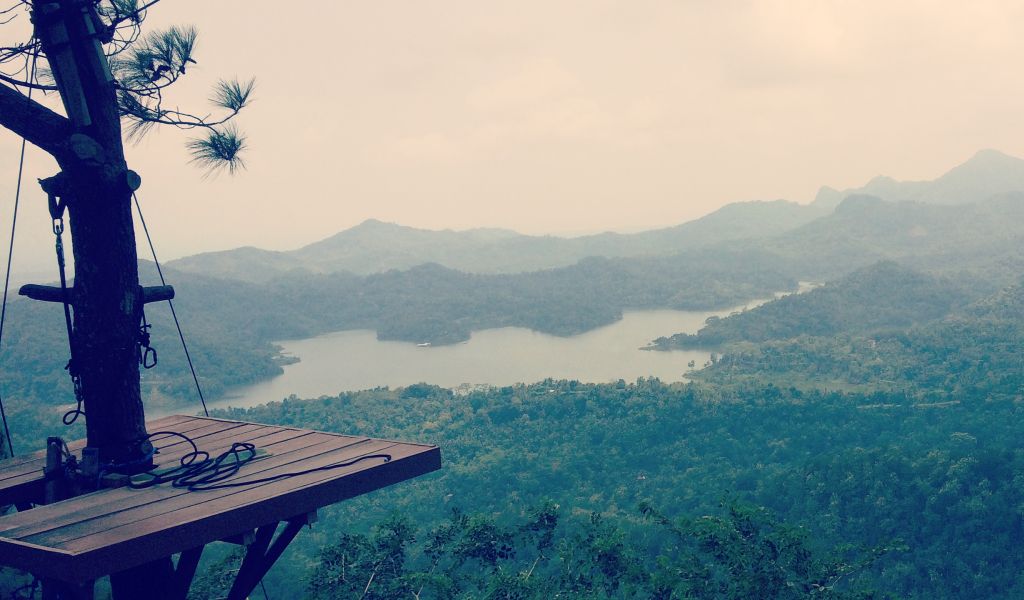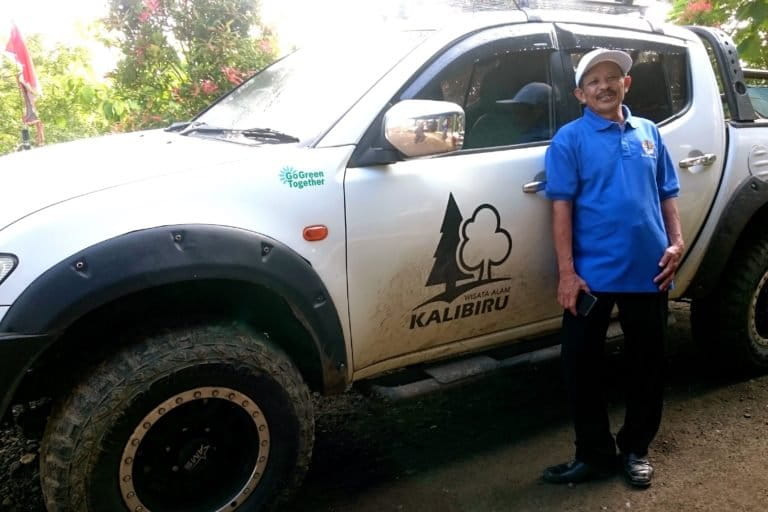On the island of Java, a social forestry scheme creates jobs at home

KALIBIRU, Indonesia — For years, Parjan hoped his community might one day gain title to the Menoreh Hills. The green valley northwest of the Javan city of Yogyakarta was tilled and tended to by generations of the same families as sultans came and went.
In 1938, the Dutch colonial administration evicted the local population and took control of the forest. Shortly after Indonesia declared independence from the Dutch in 1945, the new government took control of the land.
“We were just thrown out without compensation,” Parjan, a resident of Kalibiru hamlet in the hilly region of Menoreh, told Mongabay. “There are still people around today who saw it all.”
Since Indonesia embarked on full democratization in 1998, successive governments have gradually granted new land-management rights to local residents. President Joko Widodo, who was first elected in 2014, wants to transfer 127,000 square kilometers (49,000 square miles) of state land to communities. But progress is slow due to the complexity of bureaucratic requirements and overlapping regulations; only around 6,000 square kilometers (2,300 square miles) were signed off for community management between 2009 and 2017.
The Menoreh Hills were an early target of the push for community management. In 2001 a group of farmers came together and formed a community cooperative. They named the group Mandiri, which means “independent.” Before long, 100 local people had joined the organization, which would hold planning meetings in a house belonging to a local schoolteacher.
“I invited the forestry service to see it first hand,” Parjan told Mongabay. The Mandiri group began replanting hillsides. Soon they noticed an increase in the water table.
“We asked to be given a chance for one or two years and if there was any wrongdoing then they could go ahead and revoke the license,” Parjan says. “In the end the district chief gave us a permit for five years.”
With a permit secured from 2003 to 2008, the community set about planting acacia, mahogany, teak and rosewood. The authorities were impressed when it came time to review the concession in 2008 — the forestry office issued a 35-year permit to the H.K. Mandiri Group to manage 35 hectares (87 acres) of state forest.

Parjan poses in front of a vehicle owned by the Kalibiru reserve. Image by Nuswantoro for Mongabay.
Following the success of the replanting initiative, the Mandiri farmers began to talk about their next steps. Kalibiru Nature Tourism began operating in 2009. That year, the farmers recorded 7,000 visitors. The following year officials recorded around 9,000 people making the trip up from Yogyakarta and the surrounding area.
“Kalibiru used to be quiet and isolated,” Sudadi, who heads the Kalibiru tourism office, told Mongabay. “Now we have a lot of people coming here from everywhere.”
In 2018, around 450,000 people visited Kalibiru to walk and take photographs between the tall trees. Homestays and small vendors multiplied. The project generated 5.9 billion rupiah ($409,000) in revenue in 2018, according to local officials. Hery Santoso, an activist at the Javlec and Damar NGO, says the experience in Kalibiru shows the model can work and should be replicated elsewhere.
“What Kalibiru did was to find an answer in social forestry,” Hery told Mongabay. “They left behind the conventional economic model based on [agricultural] land which tends to be less productive and moved into a more productive economy based on services.”
Closer to home
The social forestry program in Kalibiru did more than replant the hillsides. Anecdotal testimony indicates the stake given to the community changed how people, particularly the young, felt about the land.
“Previously they considered forests to be the business of old people,” the head of Kalibiru hamlet, Mariko Trinugroho, told Mongabay. “Now there is this awareness among youth that preserving forests must be done together.”

An information board in Kalibiru. Image by Nusawantoro for Mongabay.
Mariko, who at 23 is the youngest local leader in the Kulon Progo district that encompasses Kalibiru, says his generation is now less likely to migrate away from Kalibiru in search of higher pay. Erma Sulistyaningsih, a high school graduate who from 2008 to 2012 worked at an electronics company in Malaysia, came back to Kalibiru to sell tickets to visitors.
“It’s closer to my family, my parents, and I can help promote this village,” Erma told Mongabay. “The income is enough because the cost of living is lower.”
Fajar Dwi Agung Jatmiko used to tough it out for seven years in a factory in Tangerang, a crowded suburban city west of Jakarta.
“My friends migrated because it was difficult to find work around Yogyakarta,” he says. “I came back to the village because there was an opportunity here.
“If I keep counting the pennies, I can save money,” he says. “If you go away, the salary may be higher, but you have a lot of expenses.”
The community here now has fixity of tenure and fewer legal worries. The community-forest scheme means people no longer have run-ins with the authorities.
“Not everyone has to work in tourism,” Budi, another Kalibiru resident, told Mongabay. “The plants in the forest still have to be looked after.” In his section of the forest, Budi has planted melinjo, petai, forest pepper, kaffir lime and ginger.
President Widodo even cited Kalibiru in a 2018 speech in Sydney at a summit of the 10-country Association of Southeast Asian Nations (Asean) and Australia.
“There are middle-class and young people who are more interested in experience and adventure rather than just luxury goods,” the president told the summit. “This is certainly having an impact on the growing global tourism sector.”
Sudadi agrees: “For those of us who are farmers and have lived in the forest, this is amazing.”

